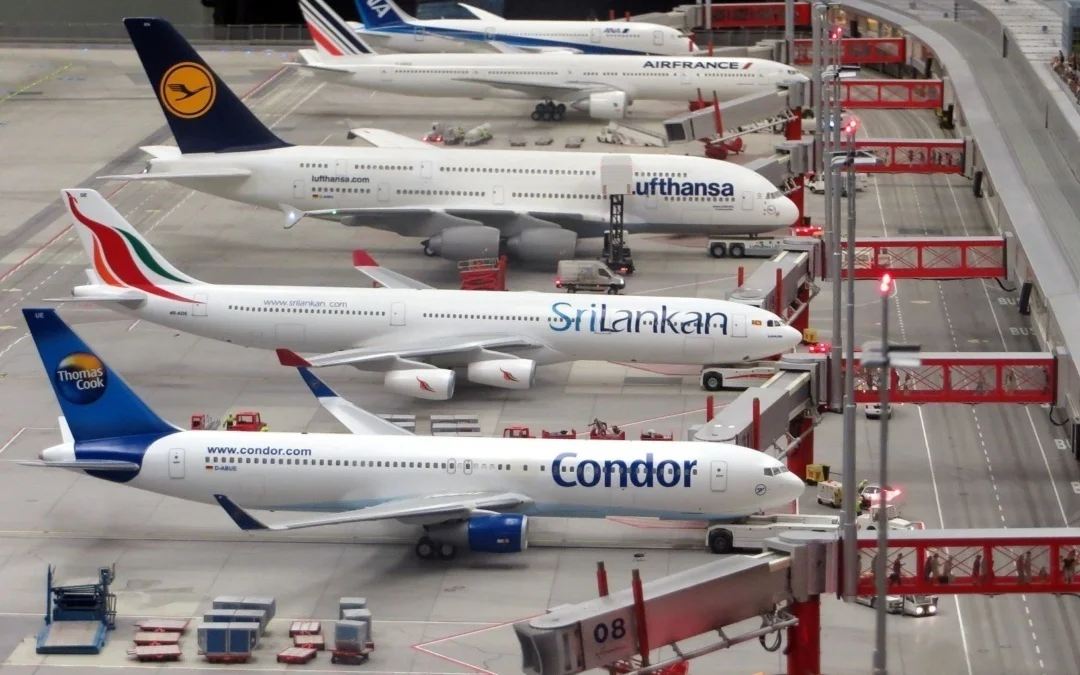Let’s face it, we all miss flying. Even though many states and countries have slowly opened up, it’s been surveyed that the majority of people do not feel safe flying. Since the pandemic outbreak grew rapidly due to travel and since airports are notorious for carrying germs, travel became one of the most restricted activities, even still today. Kati recently flew to Germany because of an illness in the family. The lines took longer. She got tested at the airports in Germany. And the airports were almost vacant. It did appear that Europe was taking Covid 19 much more seriously and dealing with it much more than the United States.
One particularly disturbing occurrence during Kati’s flight was that everyone had to wear a mask. Once passenger decided, after drinking too much, he did not want to. The plane turned around in the middle of the Atlantic and went back to Miami to deboard this passenger. Adding even more stress to the trip.
At the beginning of the Coronavirus outbreak, people were particularly uneasy about flying and it initially was rated the riskiest activity for a long time and unfortunately not much testing had been done.
However, with about eight months into the pandemic, we have more knowledge and protocol for handling the virus. Flying isn’t as risky as we initially expected and many protocols are currently implemented and will
Is Flying Risky?
Any travel right now offers risk. Even a low risk is still a risk. However, we’ve recently learned flying isn’t as risky as we thought and there’s finally good news! The department of defense of the United States has been closely working with United Airlines for a landmark study to investigate the actual risk involved with flying, how likely it is to be sick and here’s what was discovered.
The Test
In order to properly test, the department of defense and United airlines employed 300 extensive tests over a six month period; they used a “breathing” and “coughing” mannequin to replicate a human on an airplane. They tested under several circumstances, positions, with and without a mask on. Their equipment was meant to survey how many “germ” particles were distributed around the plane.
The Results
Most people were surprised by the results. The results concluded that the spread is almost non-existent if you’re wearing a mask, in fact, it gave a .003% chance of contracting while wearing a mask on. Obviously, there are factors to consider, like people moving around the cabin who are carrying the virus, but these findings are optimistic.
What they discovered is airflow has one of the biggest reasons for their results. The airflow of airplanes is supposed to be one of the reasons; airflow goes up to down and uses a HEPA filter which helps eliminate 99.99% of airborne particles for cleaner air supply. It was compared to being as low as being struck by lightning. 44 potential carriers since the beginning of the pandemics.
Other Studies That Have Drawn Conclusions
Other studies are slowly coming out to help give insight to the real risk we face while flying during the pandemic. Shortly after results were released from the Department of Defense, Harvard School of Public Health released its own findings. They also have been gathering data from various tests and have found similar results.
Similar to the previous study, what is being concluded is as long as people wash their hands, use sanitizer, and most importantly, wear a mask, the airflow in airplanes plays a crucial part of why we’re seeing little transmission of particles within a plane. The study by Harvard concluded with proper measures, flying can be safer than eating in a restaurant. It’s optimistic that multiple studies are having similar results.
Protocols Currently Being Done for Safe Travel
There’s no doubt the travel industry has suffered the hardest during the pandemic since the majority of flying shut down or has been restricted. During that time, airlines have been working diligently to improve their procedures and protocols in order to keep people safe. Flying isn’t what it normally looked like but here are some of the major changes:
Boarding:
Airlines are taking extra precautions for social distancing. The sections are broken up into smaller groups in order to limit crowding. Some airlines are letting groups of no more than ten at a time board their flight. All the tickets are self scan to prevent further interactions. Once passengers enter the plane, they are provided sanitizing wipes for extra precaution.
Cleaning:
As you can imagine, cleaning has become much more thorough since the pandemic started. Airlines have upgraded their cleaning products to medical facility quality. They are taking more time in between flights for ventilation and deep cleaning of seats, bathrooms and all surfaces. Air sanitizers are being used after every flight.
Seat Spacing:
Finally! They got rid of the middle seat! Now we have a reason to avoid the middle seat because almost all airlines have eliminated the middle rows for social distancing.
Masks:
Masks are a must on almost all planes. It’s also the most proven way to avoid contracting or spreading the virus. If everyone can wear their mask, the greater chance we have of keeping others safe and hopefully increasing travel options.
COVID Test:
Certain countries will require proof of a negative COVID test 72 hours before your flight. Always double check the official government site of the country you are going to and check if its required. In many parts of Europe, testing sites are operating at the airports to administer tests as soon as you land.
Countries and States Opening Up
Unfortunately, countries have been slow to open up, especially for Americans. The list is limited but changing every month. As of now, Americans can travel to almost all of the islands in the Caribbean, most of Central America and many of the Northern countries in South America. A few countries in Eastern Europe, like Croatia have opened up to Americans and a few countries throughout Africa. It’s important to check with a country’s official government page to see what the regulations and requirements are for entry.
Even if you stay within the United States, the individual states alone have been constantly changing. Surges throughout the United States are varying and change with different regions. Even if you aren’t flying out of the country, it’s important to always check guidelines before you leave for a trip. States are checking their own status every couple of weeks to implement changes and it’s important to know before you travel anywhere.
Although traveling by plane might be safer than we initially thought, we should still expect the same protocols and changes for some time, possibly forever. As of now, many airlines are expecting to open up more flights as we enter the new year and increasing seating capacity.
At the end of the day, flying will remain a risk no matter what. Anything activity any of us engage in will carry a potential risk. But based on these studies and protocols being made by airlines, it’s safe to say airline travel will continue to increase moving into the new year, as more people feel confident about their safety. For the time being, it’s still important to always check country or state regulations regarding travel since everything is constantly changing.
And if you do choose to fly, it’s important to implement all the standard safety protocols for hygiene measures to ensure your safety and of others.
Related Posts
Our Top Wildlife Destinations
From majestic lions to playful otters, the wildlife that inhabits our planet never fails to captivate and inspire us. Kati and I have traveled the world to see the incredible wildlife it has to offer from the Arctic to the heart of India. Wildlife never fails to inspire and awe us and has become one of the reasons that we explore new places.
Lost in the Pantanal
We are searching for the apex predator of the Pantanal – the Jaguar.
The Pantanal, a sprawling wetland that stretches across Brazil, Bolivia, and Paraguay, is a haven for wildlife. It’s a place where the air is filled with the cacophony of bird calls, the rustling of leaves as capybaras scurry by, and caiman swimming nearby. Searching for jaguars in the Pantanal is an adventure that promises excitement, awe, and a deep appreciation for the beauty of nature.
The Conservationists that have Inspired us
As we have traveled throughout the world, wildlife conservation and protecting our planet has become a priority.
Conservation is a critical issue that affects the future of our planet. It requires individuals who are willing to take a stand and lead by example, inspiring others to join the cause. Here are the lives and legacies of five such conservationists that have inspired Kati and I who have left an indelible mark on the world.











0 Comments